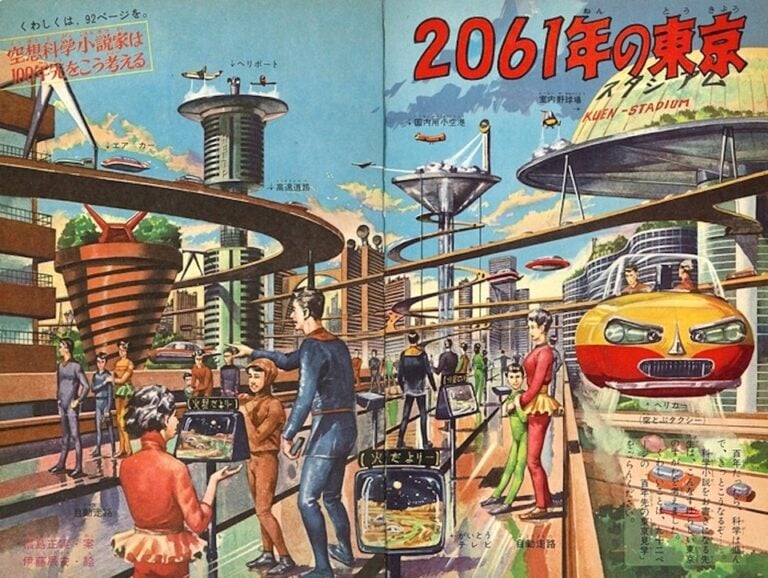
A recent article published by the BBC has drawn much debate. The author, Rupert Wingfield-Hayes, BBC’S departing Tokyo correspondent, bemoans the lack of progress the country has made in the decade he has lived here. But, is that truly the case? Is Japan truly yet to recover from the early-nineties market crash? Or has the author had his eyes closed to the shifting landscape around him?
Here are the main points of contention, and why things may be less clear-cut than the article suggests.
Employment
Wingfield-Hayes addresses the current state of Japan’s job market and deplores an economy flooded with low-productivity menial jobs which have been a significant reason for low and stagnant wages (in November last year, for example, real wages dropped by 3.8% compared to the year before). Alongside a static wage structure hampering the workforce, gender disparity is also holding Japan back. Despite women accounting for 44% of employees nationwide, only 13% of managers are women, and despite female workplace participation, almost 50% of the roles are part-time or lower-salary positions. Speaking with Yuriko Koike, Tokyo’s first female governor, he reminds us that a measly one in ten members of parliament are women.
But…
Japan has one of the lowest unemployment rates in the world, just 2.8%. This is the lowest among the countries that make up the ten largest economies, and by some margin. This is largely due to the culture of creating jobs when they really aren’t needed: parking attendants; gasoline stand assistants and window washers; and staff for mandatory driving license renewal courses. This tactic to keep unemployment down also relieves the burden on an already stretched social welfare system.
Housing
Often cited as a critical sign of Japan’s declining economic prowess, and a main point in the BBC article, is the devaluation of houses over time. Rather than becoming an asset, properties in Japan become essentially worthless by the time you’ve paid off the mortgage. Couple this with the tear-down and rebuild cycle of around thirty years, and you may well find yourself securing a new mortgage to build a new house, to replace the old house that you’ve just finished paying off the bank for.
This build-destroy-rebuild cycle is obviously terrible for the environment. Not only does the production of brick, steel, and glass generate emissions, but over 400 million tonnes of demolished concrete waste was produced in 2020.
With a focus on developing mega-cities in Japan, rural depopulation has led to an abundance of abandoned homes, and villages and towns dying out. It’s all too easy to see Tokyo, Osaka, or even cities like Nagoya and witness the urban development and improvements to infrastructure, and picture Japan on a high-speed forward-trajectory. But spend some time away from the major cities, and you will notice a worrying trend of stagnation. In not-too-few instances, it’s like stepping back into the past (and not in quite the romantic way that people imagine). And these ever-expanding mega-cities seem to have done little for the diminishing national wealth. Despite boasting the world’s third-largest economy, the country also holds the world’s largest sum of public debt, 259% of its annual GDP.
There is an argument that building more densely in cities and around public transportation cuts down on emissions. However, it is by no means enough to offset Japan’s rebuilding culture (Japan still ranks 7th highest among OECD countries for CO2 emissions per capita).
However…
Cities such as Tokyo need to keep a steady flow of new housing being built to stay in balance with the constant immigration from the countryside, and despite this, house prices in the capital have actually fallen in recent years.
This means that the average Japanese worker can buy and own their own property, which is in stark contrast to nations such as the UK, the US, and New Zealand, where people are locked out of the housing market altogether and forced to live with their parents at home.
It’s Japan’s obsessive scrap-and-rebuild practices that are a major reason why houses and rent remain so affordable. Also, this approach has dramatically improved the quality of housing compared to the “Rabbit Hutches” of the eighties. Surprisingly, the average Japanese homeowner can now enjoy a larger floor space per person than their UK counterpart.
Population
It was no surprise that the article spent time focusing on Japan’s well-documented, two-fold population problem: it is both shrinking and aging. The immediate issue is aging, and the increasing toll the social welfare programs for the elderly are having on the country’s ballooning debt. Alone, these programs consume almost the entirety of the nation’s tax revenues. Essentially, Japan is spending far more than it makes, and that won’t be changing any time soon.
The shrinking population is down to the low birth rate, which should be seen as a social epidemic more than anything else: increasing trends of disinterest in marriage, and a rise in the number of sexless young adults, add up to only 800,000 babies born last year- the lowest since accurate records began in the 1890s.
Efforts are being made…
With an average birthrate of 1.3, well below the 2.1 needed to stave off population decline, the government has been taking steps to counteract this. Over the past decade, the government has overhauled the parental benefits system, and new mothers can now receive between 50 to 67% of their regular pay while on leave, compared to just the 25% available in 2000. The parental leave uptake among men has also risen from 1.4% in 2010 to 12.7% in 2020.
Another commonly stated reason for the reluctance to have children is the childcare costs in Japan. But, although relatively high, costs are still less than the equivalent toll percentage of wages cost in the UK.
Immigration
At the onset of the COVID pandemic, Japan was quick to close its borders. Foreigners, even those with permanent residency, businesses, homes, and families in the country, were barred from entering. When the BBC’s Tokyo correspondent inquired to the foreign ministry as to why, he was plainly told “They are all foreigners”.
Is Japan still sceptical of the outside world? Despite a faltering economy and a population decline, the perception is that Japan still seems to reject immigration as a possible solution or, at the very least, a way to help. Why? Japan knows it needs people but apparently fears dilution, clearly shown by the percentage of foreigners in the country (in 2021 it was a mere 2.2%).
In reality…
2.2% is an extremely low figure. But it is, in fact, a 100% increase since ten years ago, which is dramatic progress in just a decade. That figure is for the country as a whole but if we shine a spotlight on Tokyo, 13% of people becoming adults (turning 20 years old) in 2018 were born outside of Japan.
Ex-prime minister Shinzo Abe implemented immigration policies that saw the number of foreign-born workers in Japan double in his first few years in office, and current PM Kishida recently made a statement about the falling birth rate, and how immigration could be a step toward addressing the issue.
At the very least, this signals institutional openness to the concept of immigration.
The Future
What reason is offered for the lacklustre development in Japan this past decade or so? Well, despite these apparent failings, Japan remains a peaceful and prosperous country, with the longest life expectancy in the world, the lowest murder rate, and little political conflict. All reasons for the government and its voters to keep the status quo.
But I think we can expect more, and changes have already begun to take place.
As this current generation of Japanese bureaucrats passes on, the next installment has, and will continue to, usher in a wave of progressive changes. Just one example is in the Japanese workplace, where the new cohort of leaders is overcoming their predecessors’ hesitancy to adopt new practices. With the aging population, I believe we will see Japan quickly shift its attitudes toward automation in industries such as agriculture, logistics, and social care, and that will be just a fraction of the transitions to come.















